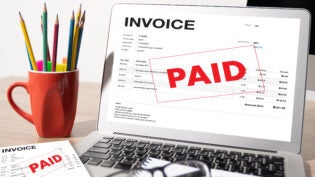Dealing with the financial and sales records of a business can turn out to be one of your least favorite tasks. But as a small business that’s still in the process of growing, it’s one of the most important. You can’t just set aside having a well-made business invoice system as this would mean delays and inaccuracies in your collection system. On the positive end, when your business has a good invoice management system, the small business can be more time-efficient and the cash flow is also steady and regular.
For financial growth, a small business must be able to manage its billing well enough. When you’re desperately trying to grow your business and establish financial stability, there’s little to no room for errors with your sales invoice.
You’ll come across in this article the best practices you can apply as a small business in relation to your sales invoice.
-
Automate Your Invoicing
In today’s day and age of technological advancements, one of the best invoice practices that small and big businesses alike can do is to automate the invoice process through various software such as MYOB and others. If your business has been dependent on a manual invoice system, now’s a good time to start switching to an automated one.
When you automate tasks that were previously manual, your invoice system will go from good to great–it will be better, faster, more accurate, and more time efficient. The right software can cut down on certain mistakes, which can be a part of a manual billing system.
The following are some of the reasons why you should automate your invoice process:
- It makes your sales collection process more efficient when the time spent to make the invoice is cut short.
- It results in operational efficiency as your employees can do more within a given time frame.
- It heightens data security as the risk of data breaches and lost financial and sales records are significantly lower.
-
Send Out Invoices More Frequently
This tip applies to those small businesses which opened credit lines for customers. This would show in the monthly accounts receivable records of the small business as payment for the cost of goods sold or services rendered that’s yet to be paid by your clients.
If this applies to your business, a rule of thumb to follow is to send out invoices more frequently. The more you send out invoices, the higher the chances that you’re going to get paid. For example, you used to send out invoices to clients with a credit line only once monthly. With this system, you’ve noticed that clients are deliberately delaying payments, and it’s harder for you to chase those deadlines. If this carries on, it can hurt the liquidity of cash for a small business.
You may want to adjust the frequency of sending out your sales invoice. This means that from a monthly schedule, do it once every two weeks. This may help stabilize your sales collection process, thereby significantly improving your sales invoice system as well.
-
Make Your Invoice Easy to Understand
There’s no need to complicate your sales invoice. It only must do its job of billing your clients for the goods you’ve sold or the services you’ve rendered. Take the time to go through your current sales invoice and have that assessment as to whether it’s easy to understand. If there’s any area in the template, format, and terms that’s confusing, simplify those.
In connection with the first tip of automating your sales invoice system, you can easily have a pre-saved invoice template ready. Whenever you must bill a customer, all you need to do is to key in the necessary information for that sale. It can shorten the sales invoice process and create a sense of consistency in all of your sales invoices.
-
Number Your Invoices
No matter how organized your invoice is, it’s still not well-made when you haven’t numbered it. Practicing a consecutive numbering system with your sales invoice makes it easier for you to find the information you’re looking for at any given time.
For example, you have a client that has a certain question about an invoice. It’s easier to match the customer’s copy with your copy when all that you must do is look for that sales invoice number. If you’re still using a manual sales invoice system, it’s as simple as having numbers on every receipt. In an automated sales invoice system, the software automatically inputs those numbers on record.
-
Avoid the Common Mistakes
There are common mistakes in the sales invoice system identified as the root cause why there are delays in the invoice. This applies universally even if you’re using an automated invoicing system. Those mistakes are identified as barriers to getting paid on time. If those barriers don’t occur that frequently, then those mistakes won’t do much to hurt your business invoicing. Once it recurs, that’s when those delays in business invoicing become problematic to your small business.
Avoiding the common mistakes that can hurt your sales invoice system will enable you to be more proactive in your approach. These include:
- You weren’t clear about the payment terms of your sales invoice.
- You sent the invoice to the wrong client.
By making minimal changes, you’d be able to improve your cash flow significantly. Hence, see to it that you evaluate your existing processes and adjust accordingly.
Takeaway
For small businesses, one of the main goals is to get paid by their clients on time. For businesses that are still trying to stabilize their finances, there’s no room for delay. Otherwise, the small business’s liquidity will suffer. This isn’t a good start for a business that’s still on the road to financial growth and stability.
With this, it follows that small businesses need to have an efficient sales invoice process. There are many strategies that can be applied, and the tips above can give you a good start to get that pursuit off the ground. Consider the ideas mentioned here as you improve your business operations.
Author: Olivia Raegan is a financial consultant. She currently works part-time for small businesses with their sales and financial accounts systems, while completing her Master’s in Business Administration and Finance. When she’s not computing numbers, she enjoys blogging to help small businesses and budding entrepreneurs.
1669 Views











